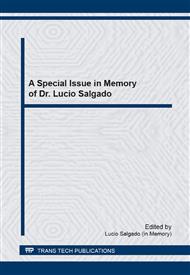p.395
p.403
p.409
p.415
p.422
p.429
p.435
p.442
p.448
Time Series Models to Obtain the Barrel Crude Oil Prices
Abstract:
The use of time series as an additional tool in decision making for the oil industry has been established as a mechanism for predicting the behavior of crude oil price. Especially in Brazil, after the discovery in this decade of the pre-salt reservoirs, the estimate of the price of a crude oil barrel through the use of modern techniques can minimize risks in exploration and production of oil. The more appropriate pricing for crude oil aims to minimize the risks to the economic activity for both exporters and importers of oil. This paper presents six different methods for obtaining crude oil future prices i.e. Multiple regression (MR), Holt ́s method (HM), Holt-Winter (HW), Kalman filter (KF), Auto-Regression/Moving-Average (ARIMA) and stochastic simulation based on the use of the Monte Carlo method (SMC). The methods are compared to determine their advantages and disadvantages against each other, seeking to determine which of the generated models has the best potential to determine the future fair price of a barrel of oil. As a result, the most appropriate methodology capable of projecting a more precise future barrel oil fair price was determined, among the six alternatives studied.
Info:
Periodical:
Pages:
422-428
Citation:
Online since:
September 2014
Authors:
Keywords:
Price:
Сopyright:
© 2015 Trans Tech Publications Ltd. All Rights Reserved
Share:
Citation:


